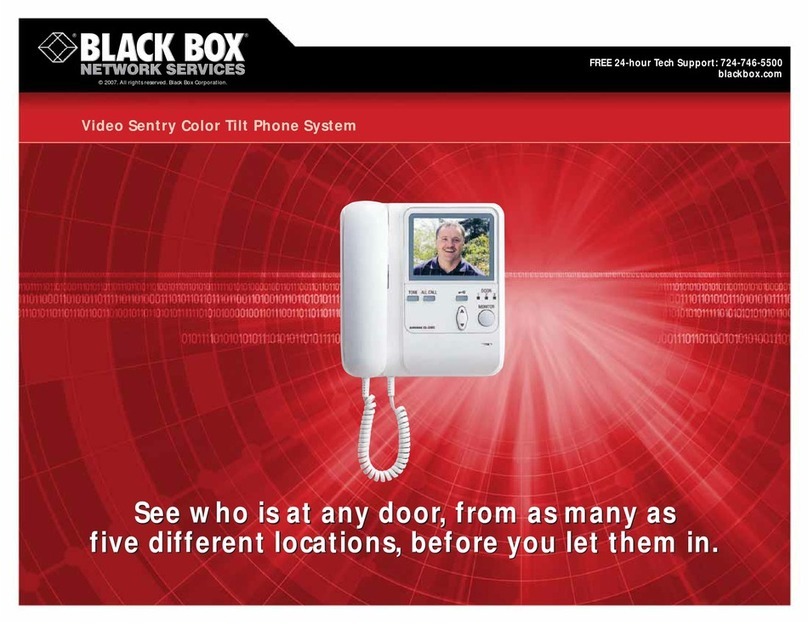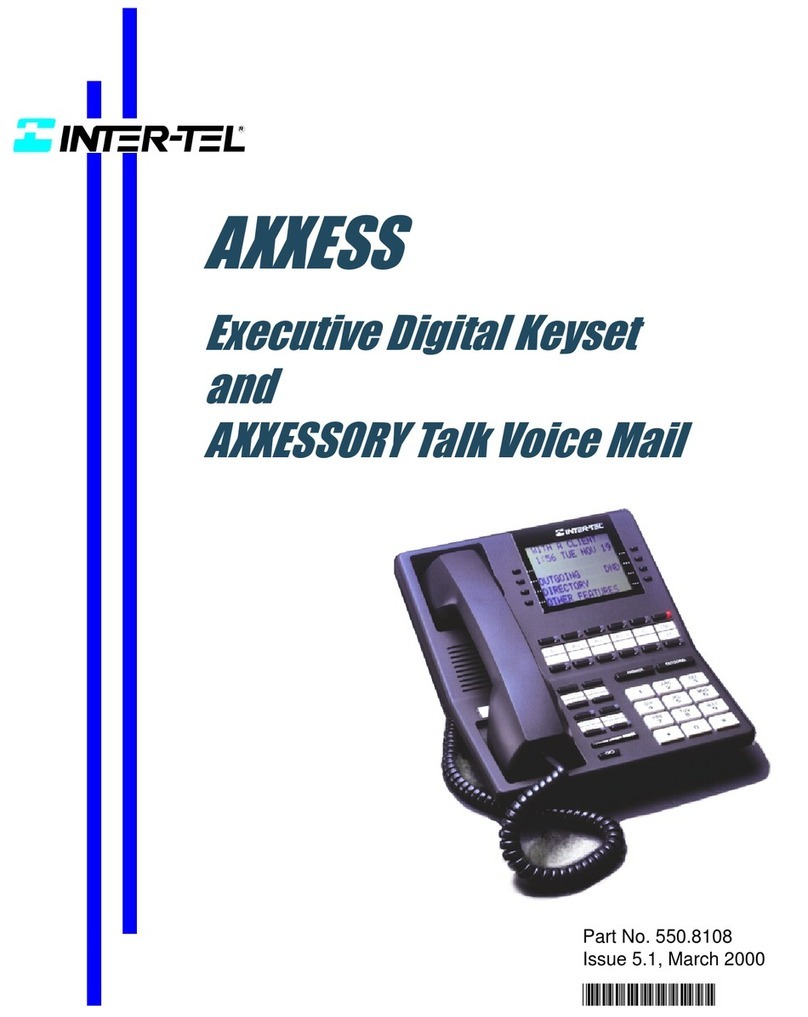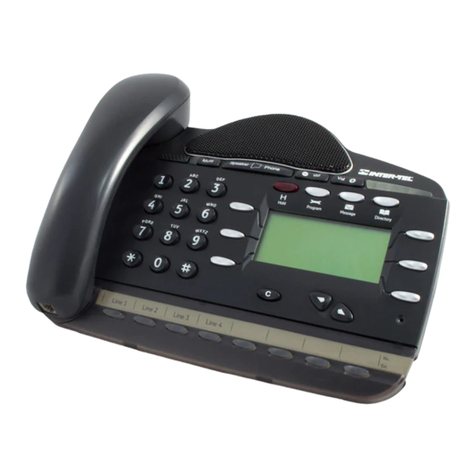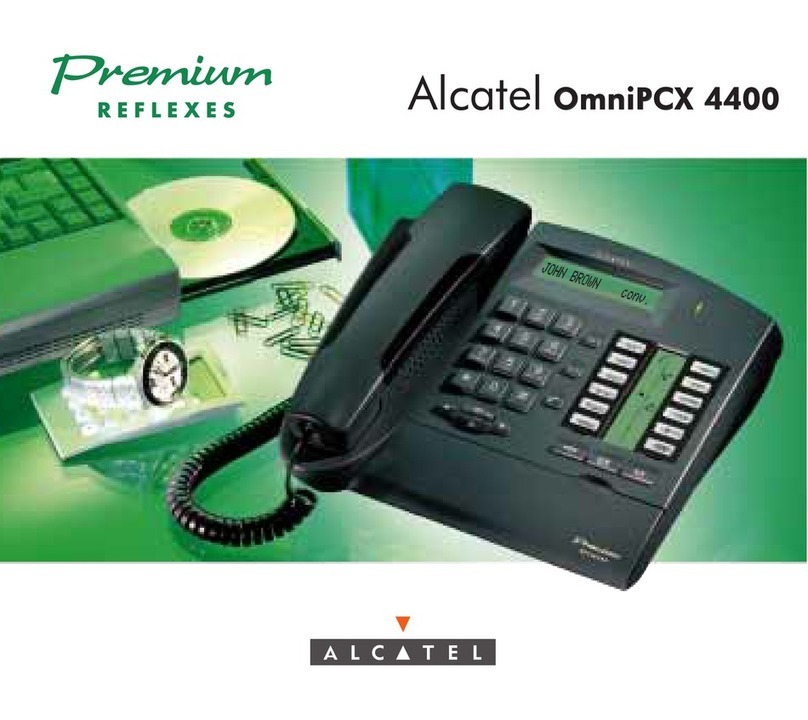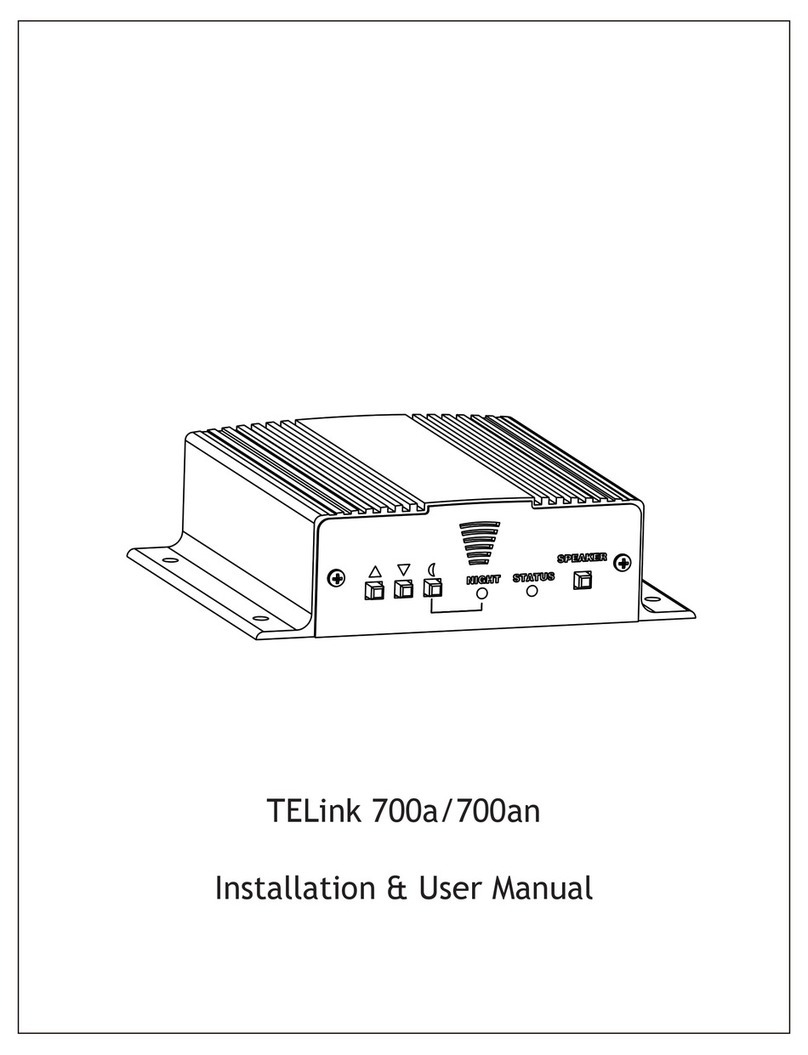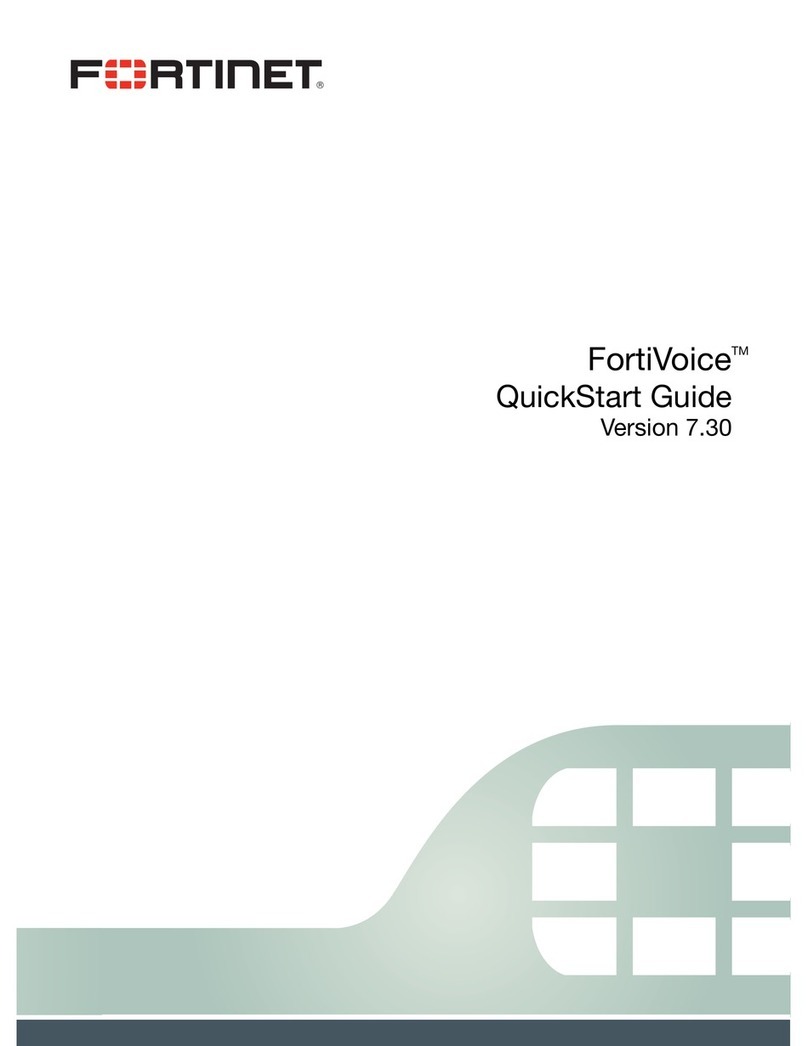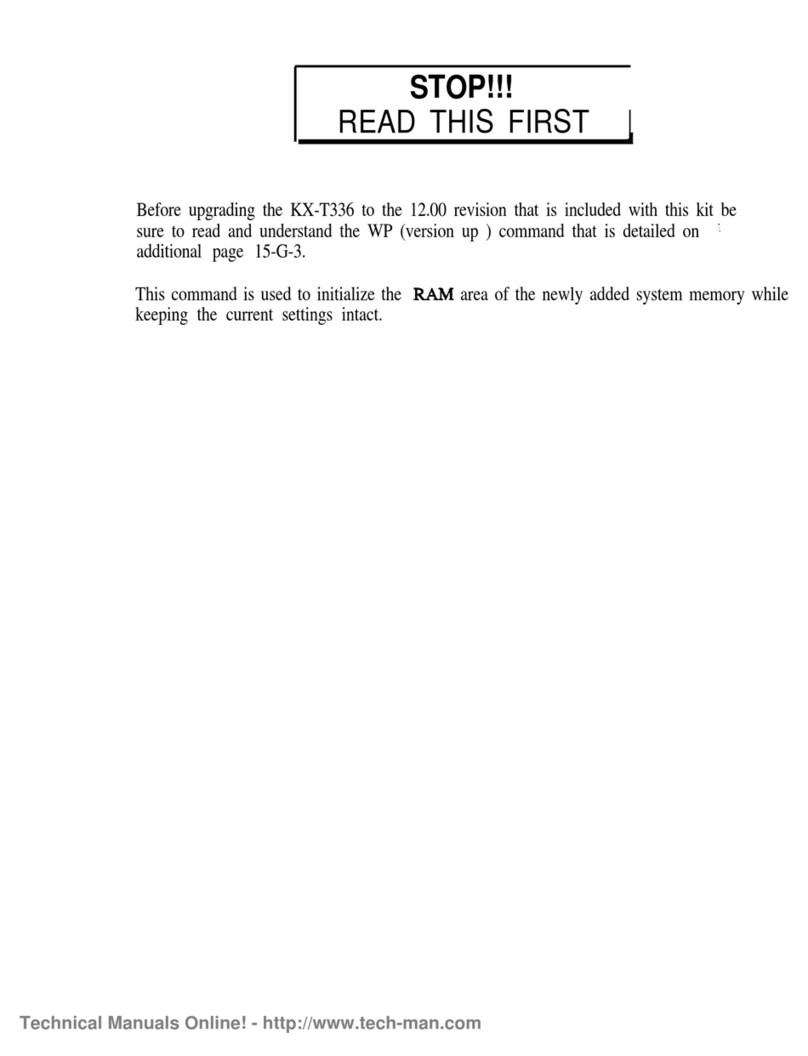Black Box Phone Line Manager 208B User manual

Phone Line Manager 208B
AUGUST 2003
FX165A
Order toll-free in the U.S. 24 hours, 7 A.M. Monday to midnight Friday: 877-877-BBOX
FREE technical support, 24 hours a day, 7 days a week: Call 724-746-5500 or fax 724-746-0746
Mail order: Black Box Corporation, 1000 Park Drive, Lawrence, PA 15055-1018
CUSTOMER
SUPPORT
INFORMATION

Contents
FEDERAL COMMUNICATIONS COMMISSION and CANADIAN DEPARTMENT OF COMMUNICATIONS
RADIO FREQUENCY INTERFERENCE STATEMENT………………………………………………………………
1
NORMAS OFICIALES MEXICANAS (NOM) ELECTRICAL SAFETY STATEMENT
INSTRUCCIONES DE SEGURIDAD …………………………………………………………………………………..
1
FCC REQUIREMENTS FOR TELEPHONE-LINE EQUIPMENT …………………………………………………… 3
CERTIFICATION NOTICE FOR EQUIPMENT USED IN CANADA ……………………………………………….. 4
1. Introduction
1.1 Introducing the Phone Line Manager 208B…………………………………………………………… 5
1.2 Before you begin………………………………………………………………………….………………. 5
1.3 A note about telephone company services…………………………………………….……………... 5
1.4 Set up……………………………………………………………………………………………………….. 6
2. Installation
2.1 Placing the Phone Line Manager 208B …………………………………………..….………………... 7
2.2 Ports on the Phone Line Manager 208B ……………………………………………………………… 7
2.3 Connecting the Phone Line Manager 208B ……………………………………....………………….. 7
2.4 Connecting the telephone line cords………………………………………………………………….. 8
2.5 Installing at the DEMARC……………………………………………………………………………….. 8
2.6 Installation with 1 or 2 telephone lines………………………………………………………………... 8
2.7 Installation on a telephone system…………………………………………………………………….. 9
2.8 Installation on a telephone system using a 66 block……………………………….………………. 9
3. Automatic Operation………………………………………………………..……………………… 10
4. Using the Phone Line Manager 208B
4.1 Special operating notes…………………………………………………………………………………. 10
4.2 Answering incoming calls………………………………………………………………………………. 11
4.3 Placing outbound calls...………………………………………………………………………………… 11
4.4 Receiving a computer call………………………………………………………………………………. 11
5. Operational descriptions for the Phone Line Manager 208B
5.1 Inbound call processing…………………………………………………………………………………. 11
5.2 Outbound line seeking…………………………………………………………………………………… 11
5.3 LED’s……………………………………………………………………………………………………….. 12
5.4 Busy tones………………………………………………………………………………………………… 12
5.5 CPC detection…………………………………………………………………………………………….. 12
5.6 # (pound) key……………………………………………………………………………………………… 12
5.7 Port lock up provision……………………….………………………………………………………….. 12
5.8 Delay Port Ringing…….………………………………………………………………….……………… 12
5.9 Power Failure……………..……………………………………………………………….……………… 12

1
FCC STATEMENT
FEDERAL COMMUNICATIONS COMMISSION and CANADIAN DEPARTMENT OF
COMMUNICATIONS RADIO FREQUENCY INTERFERENCE STATEMENT
This equipment generates, uses, and can radiate radio frequency energy and if
not installed and used properly, that is, in strict accordance with the
manufacturer’s instructions, may cause interference to radio communication.
It has been tested and found to comply with the limits for a Class A
computing device in accordance with the specifications in Subpart B of Part
15 of FCC rules, which are designed to provide reasonable protection against
such interference when the equipment is operated in a commercial
environment. Operation of this equipment in a residential area is likely to
cause interference, in which case the user at his own expense will be required
to take whatever measures may be necessary to correct the interference.
Changes or modifications not expressly approved by the party responsible
for compliance could void the user’s authority to operate the equipment.
This digital apparatus does not exceed the Class A limits for radio noise
emission from digital apparatus set out in the Radio Interference
Regulation of the Canadian Department of Communications.
Le présent appareil numérique n’émet pas de bruits radioélectriques
dépassant les limites applicables aux appareils numériques de la classe A
prescrites dans le Règlement sur le brouillage radioélectrique publié par le
ministère des Communications du Canada.
NOM STATEMENT
NORMAS OFICIALES MEXICANAS (NOM) ELECTRICAL SAFETY STATEMENT
INSTRUCCIONES DE SEGURIDAD
1. Todas las instrucciones de seguridad y operación deberán ser leídas antes de
que el aparato eléctrico sea operado.
2. Las instrucciones de seguridad y operación deberán ser guardadas para
referencia futura.
3. Todas las advertencias en el aparato eléctrico y en sus instrucciones de
operación deben ser respetadas.
4. Todas las instrucciones de operación y uso deben ser seguidas.
5. El aparato eléctrico no deberá ser usado cerca del agua—por ejemplo, cerca
de la tina de baño, lavabo, sótano mojado o cerca de una alberca, etc.
6. El aparato eléctrico debe ser usado únicamente con carritos o pedestales que
sean recomendados por el fabricante.
7. El aparato eléctrico debe ser montado a la pared o al techo sólo como sea
recomendado por el fabricante.
8. Servicio—El usuario no debe intentar dar servicio al equipo eléctrico más allá
a lo descrito en las instrucciones de operación. Todo otro servicio deberá ser

22
referido a personal de servicio calificado.
9. El aparato eléctrico debe ser situado de tal manera que su posición no
interfiera su uso. La colocación del aparato eléctrico sobre una cama,
sofá, alfombra o superficie similar puede bloquea la ventilación, no se
debe colocar en libreros o gabinetes que impidan el flujo de aire por los
orificios de ventilación.
10. El equipo eléctrico deber ser situado fuera del alcance de fuentes de
calor como radiadores, registros de calor, estufas u otros aparatos
(incluyendo amplificadores) que producen calor.
11. El aparato eléctrico deberá ser connectado a una fuente de poder solo
del tipo descrito en el instructivo de operación, o como se indique en el
aparato.
12. Precaución debe ser tomada de tal manera que la tierra fisica y la
polarización del equipo no sea eliminada.
13. Los cables de la fuente de poder deben ser guiados de tal manera que
no sean pisados ni pellizcados por objetos colocados sobre o contra
ellos, poniendo particular atención a los contactos y receptáculos donde
salen del aparato.
14. El equipo eléctrico debe ser limpiado únicamente de acuerdo a las
recomendaciones del fabricante.
15. En caso de existir, una antena externa deberá ser localizada lejos de las
lineas de energia.
16. El cable de corriente deberá ser desconectado del cuando el equipo no
sea usado por un largo periodo de tiempo.
17. Cuidado debe ser tomado de tal manera que objectos liquidos no sean
derramados sobre la cubierta u orificios de ventilación.
18. Servicio por personal calificado deberá ser provisto cuando:
A: El cable de poder o el contacto ha sido dañado; u
B: Objectos han caído o líquido ha sido derramado dentro del aparato;
o
C: El aparato ha sido expuesto a la lluvia; o
D: El aparato parece no operar normalmente o muestra un cambio en su
desempeño; o
E: El aparato ha sido tirado o su cubierta ha sido dañada.

3
FCC STATEMENT
FCC REQUIREMENTS FOR TELEPHONE-LINE EQUIPMENT
1. The Federal Communications Commission (FCC) has
established rules which permit this device to be directly
connected to the telephone network with standardized
jacks. This equipment should not be used on party lines
or coin lines.
2. If this device is malfunctioning, it may also be causing
harm to the telephone network; this device should be
disconnected until the source of the problem can be
determined and until the repair has been made. If this is
not done, the telephone company may temporarily
disconnect service.
3. If you have problems with your telephone equipment
after installing this device, disconnect this device from
the line to see if it is causing the problem. If it is,
contact your supplier or an authorized agent.
4. The telephone company may make changes in its
technical operations and procedures. If any such
changes affect the compatibility or use of this device,
the telephone company is required to give adequate
notice of the changes.
5. If the telephone company requests information on what
equipment is connected to their lines, inform them of:
a. The telephone number that this unit is connected to.
b. The ringer equivalence number.
c. The USOC jack required: RJ-11C.
d. The FCC registration number.
Items (b) and (d) can be found on the unit’s FCC label.
The ringer equivalence number (REN) is used to
determine how many devices can be connected to your
telephone line. In most areas, the sum of the RENs of
all devices on any one line should not exceed five
(5.0). If too many devices are attached, they may not
ring properly.
6. In the event of an equipment malfunction, all repairs
should be performed by your supplier or an authorized
agent. It is the responsibility of users requiring service
to report the need for service to the supplier or to an
authorized agent.
CANADA CERTIFICATION STATEMENT

44
CERTIFICATION NOTICE FOR EQUIPMENT USED IN CANADA
The Canadian Department of Communications label identifies certified equipment. This
certification means that the equipment meets certain telecommunications-network
protective, operation, and safety requirements. The Department does not guarantee the
equipment will operate to the user’s satisfaction.
Before installing this equipment, users should ensure that it is permissible to be
connected to the facilities of the local telecommunications company. The equipment must
also be installed using an acceptable method of connection. In some cases, the company’s
inside wiring associated with a single-line individual service may be extended by means
of a certified connector assembly (extension cord). The customer should be aware that
compliance with the above conditions may not prevent degradation of service in some
situations.
Repairs to certified equipment should be made by an authorized Canadian
maintenance facility—in this case, your supplier. Any repairs or alterations made by the
user to this equipment, or equipment malfunctions, may give the telecommunications
company cause to request the user to disconnect the equipment.
Users should ensure for their own protection that the electrical ground connections
of the power utility, telephone lines, and internal metallic water pipe system, if present,
are connected together. This precaution may be particularly important in rural areas.
CAUTION:
Users should not attempt to make such connections themselves, but
should contact the appropriate electric inspection authority, or
electrician, as appropriate.
The LOAD NUMBER (LN) assigned to each terminal device denotes the percentage of
the total load to be connected to a telephone loop which is used by the device, to prevent
overloading. The termination on a loop may consist of any combination of devices,
subject only to the requirement that the total of the load numbers of all the devices does
not exceed 100.
CHAPTER 1: Introduction

5
1. Introduction
1.1 Introducing the Phone Line Manager 208B
The Phone Line Manager 208B is a phone line management system designed to route
incoming phone calls to 1 of 8 destinations (typically 2 phones, fax machine(s) and computer
modems). It is also capable of transferring calls to any of the following devices:
• Credit card authorization terminal • HVAC monitoring
• Security alarm and monitoring system • Energy management system
• Money order dispensing system • Flow monitoring system
• Bulletin Board System (BBS) • Time and attendance system
• Call diverter • Fluid storage system
• Laser fax cartridge monitoring • Point-of-sale terminal
• CO2monitoring • Remote diagnostic system
1.2 Before you begin
• Read through this guide and choose the installation
which best fits your needs
• Unpack and check for the following items:
Installation kit includes the following:
• 1 mounting template
• 2 mounting screws
If any of these items are missing or damaged, call
(724) 746-5500.
NOTE
According to standard industry practice, surge protection is recommended for the power and the telephone line connections.
1.3 A note about telephone company services
If you currently subscribe or plan to subscribe to any of these services, please note the following:
• Call Waiting: Fax machine and modem transmissions may be disrupted by
the call-waiting signal unless call waiting is disabled. It can be disabled on a
single call by pressing *70 before dialing a phone number.
• Call Forwarding: If this service is activated, the Phone Line Manager 208B
cannot process incoming calls.
• Phone Company Voice Mail: Is not compatible with the Phone Line
Manager 208B.
• Phone Company Distinctive Ringing: The Phone Line Manager 208B cannot
process phone company distinctive rings.

66
1.4 Set-up
The Phone Line Manager 208B is a 1 or 2 telephone
line device (depending on your installation) that can be
installed on any type system that consists of one or
more lines, with one or more phones.
The Phone Line Manager 208B has one operating
mode (automatic) and can be connected at the
DEMARC.
The Phone Line Manager 208B will:
• Answer…the calls automatically
• Route…calls to Ports 1 and 2
• Transfer…fax calls on Line 2 to Port 8
or calls to the other ports when transfer
codes are detected

7
CHAPTER 2: Installation
2. Installation
2.1 Placing the Phone Line Manager 208B
The Phone Line Manager 208B can be mounted on a wall
with the connected telephone line cords above or below the
unit. You can place the telephone line cords through the
line guides on the back of the Phone Line Manager 208B to
reduce tangling.
NOTE
Do not place the Phone Line Manager 208B in close proximity to any peripheral equipment (approximately 2 to 3 feet away from all electronic
equipment).
2.2 Ports on the Phone Line Manager 208B
The rear panel of the Phone Line Manager 208B includes ten (10) modular ports and a power input port as shown:
A typical installation (voice, fax and multiple computer modems) would connect telephone equipment as follows:
1.
Connect Line 1 to this port. You can connect a
two line telephone cord to this port for Line 1 and
Line 2
2.
Connect Line 2 to this port
3.
Connect a telephone or KSU to receive calls on
Line 1
4.
Connect a telephone or KSU to receive calls on
Line 2
5.
Connect a computer modem or other data device
6. Connect a computer modem or other data device
7. Connect a computer modem or other data device
8. Connect a computer modem or other data device
9. Connect a computer modem or other data device
10. Connect a fax machine
2.3 Connecting the Phone Line Manager 208B
This section explains how to install the Phone Line Manager 208B in most phone configurations that appear in an office. The
Phone Line Manager 208B can be installed in one of the following phone configurations:
• With a KSU/PBX
• Using single line telephones
Installation procedures for each of these configurations are provided in the following sections.

88
2.4 Connecting the telephone line cords
The Phone Line Manager 208B is designed to connect directly to either a single, two-line cord or two separate single line
cords. The Phone Line Manager 208B comes with two single line cords.
2.5 Installing at the DEMARC
The following diagram shows an installation at the
point of DEMARC on Line 1 and Line 2. Once
connected in this configuration, the telephones
will never ring on an inbound call if the Phone
Line Manager 208B transfers to Ports 3 through 8.
Only calls that do not produce transfer tones will
ring the phones on Ports 1 and 2.
2.6 Installation with 1 or 2 telephone lines
The following diagram shows a typical installation for 1 or 2 telephone lines. While the connections to the telephone (wall)
jack may be different for other types phone systems, the connections to the Phone Line Manager 208B remain the same for
most phone configurations.
The Phone Line Manager 208B can operate with one or two telephone lines. If you are using only one telephone line and are
going to connect a fax to the Phone Line Manager 208B, connect the single line to Line 2 (enabling automatic fax detection
and routing to Port 8). If you are not using a fax, connect a single line to either Line 1 or Line 2. If you are using two lines
and are going to connect a fax to the Phone Line Manager 208B, connect the line that you want to receive fax calls on to Line
2; connect the other line to Line 1.
1. Telephone (wall) jack 1 –Connect to Line
1 Port on Phone Line Manager 208B
2. Telephone (wall) jack 2 –Connect to Line
2 Port on Phone Line Manager 208B
3. Power Supply –Connect to 12VAC Port on
Phone Line Manager 208B
4. Single line telephone -Connect to Port 1
5. Single line telephone –Connect to Port 2
6. Computer modem –Connect to Port 3,
set to answer on 1 ring
7. Computer modem –Connect to Port 4,
set to answer on 1 ring
8. Computer modem –Connect to Port 5,
set to answer on 1 ring
9. Computer modem –Connect to Port 6,
set to answer on 1 ring
10. Computer modem –Connect to Port 7,
set to answer on 1 ring
11. Fax machine/fax modem card –Connect to
Port 8, set to answer on 1 ring

9
2.7 Installation on a telephone system (KSU/PBX)
The diagram shows telephone devices connected to the Phone Line Manager 208B for the telephone system; follow the same
procedures for a mini-telephone system. For the Phone Line Manager 208B to operate properly, it must be “in front” of the
telephone system. Connect the other equipment as previously shown.
All equipment on that line (telephone system, fax, computer modem, etc.) must connect directly to the Phone Line Manager
208B.
Caution –Do not plug the Phone Line Manager 208B into a telephone system phone jack. You may damage the phone
system or the Phone Line Manager 208B.
2.8 Installation on a telephone system (KSU/PBX) using a 66 block

10
10
CHAPTER 3: Automatic Operation
3. Automatic Operation
The Phone Line Manager 208B prohibits incoming calls from direct access to any connected device. It will answer calls on
Line 1 and Line 2 on the first ring. Once the call is answered, it listens for the following transfer codes:
Line 1 Transfer Codes Line 2 Transfer Codes
Port 1 (Automatic) 1100Hz CNG tone to route to Port 8
Port 2 Port 1
Port 3 Port 2 (Automatic)
Port 4 Port 3
Port 5 Port 4
Port 6 Port 5
Port 7 Port 6
Port 8 Port 7
Port 8
If the Phone Line Manager 208B detects any of these signals, it transfers the call to the desired port. If no signals are
detected, the call on Line 1 will be automatically transferred to Port 1 and the call on Line 2 will be automatically transferred
to Port 2.
The Phone Line Manager 208B will ring Ports 1 and 2 a maximum of 20 times each. If either port device does not answer
within 20 rings, the call will be disconnected.
CHAPTER 4: Using the Phone Line Manager 208B
4. Using the Phone Line Manager 208B
4.1 Special operating notes
Before operating the Phone Line Manager 208B, be sure that you understand the following information concerning the
telephone equipment that is used with the Phone Line Manager 208B.
Fax CNG tones: Most faxes send audible beep tones called CNG (CalliNG) tones. This tone is a distinct beep that repeats
every three (3) seconds. Once a fax has dialed the destination fax number, it generates this tone while waiting for the
receiving fax to answer. Not all faxes transmit this tone when they place a call. Most, but not all faxes produce this tone
through their auto-dial feature, speed dial memory position, or by the operator pressing the fax machine’s start button after the
number is dialed. For best results, callers should have your fax number programmed into their fax machine’s “speed-dial”
memory.

11
4.2 Answering incoming calls
When the telephone rings on Port 1 or Port 2, it will be a telephone call. To answer a call that is ringing, simply lift the
receiver off-hook. To have your data device answer a call on Ports 3 through 8, set your device to auto answer on 1 or 2 rings.
4.3 Placing outbound calls
To place a call from Ports 1 and 2, simply lift the phone receiver off-hook. When you hear dial tone, dial the telephone
number. For Ports 3 through 8, program your data device to go outbound and you will access the telephone line. If both
Lines 1 and 2 are in use when you attempt to dial outbound on any port, you will hear a busy signal.
4.4 Receiving a computer call
Unlike a fax call, most computer calls do not produce identifying tones; they remain silent until another modem answers the
call. To receive a computer call to any of the Phone Line Manager 208B ports, instruct the caller to use one of the following
methods. In this example, we use a modem:
Dialing the destination (receiving) computer through the originating (calling) computer
To have the calling modem automatically “over dial” the port transfer code and access the modems connected to the Phone
Line Manager 208B, the caller must take into consideration whether the call is local or long distance.
For remote access to any of the ports on the Phone Line Manager 208B, instruct the caller to use the following modem dialing
string in the communication software. For example, we are going to access Port 3:
LOCAL CALL -ATDT(phone number) ,#33,#33,#33
LONG DISTANCE -ATDT(phone number) ,,#33,#33,#33
The calling modem picks up its phone line and dials the phone number. The comma (,) tells the modem to wait approximately
two (2) seconds then repeatedly “over dials” the access code.
NOTE
Not all modem comma (,) commands delay dialing for a two second interval. See your modem Operator’s Guide and adjust the number of
commas you use accordingly.
5. Operational descriptions for the Phone Line Manager 208B
5. Operational descriptions for the Phone Line Manager
208B
5.1 Inbound Call Processing -The Phone Line Manager 208B will process incoming calls as follows:
Line 1: When a call is received on Line 1, the Phone Line Manager 208B will automatically answer the call and route it to
Port 1 if no transfer tones are detected.
Line 2: When a call is received on Line 2, the Phone Line Manager 208B will automatically answer the call and route it to
Port 2 if no transfer tones are detected.
5.2 Outbound Line Seeking -The Phone Line Manager 208B will select the first available line for devices calling
outbound. If both lines are available, Line 2 will be selected first, then Line 1. If both lines are in use, the Phone Line
Manager 208B will give the device port a busy tone.

12
12
5.3 LED’s -The Phone Line Manager 208B has a total of 11 LED’s: One for power status (on/off), two LED’s to indicate
what line is in use, and eight LED’s to indicate which port is on line. The LED for Line 1 is red and the LED for Line 2 is
green. When a port is connected to a line, the LED color for that port will be red to indicate a connection to Line 1 or green to
indicate a connection to Line 2.
5.4 BUSY TONES -The Phone Line Manager 208B will produce a busy tone if a port goes off-hook and there is no
telephone line available. It will produce a busy tone on inbound calls if the requested port is already off-hook.
5.5 CPC Detection -Calling Party Control operates when a device goes off-hook (inbound or outbound) as follows:
Inbound call: When the Phone Line Manager 208B answers the call, and it is routed and answered by the appropriate
port device. When the port device answers the call, the Phone Line Manager 208B will look for the CPC signal. If
detected on the telephone line, it will disconnect from the telephone line and look at the port. If the port remains off-
hook, it cannot access the telephone line again until the connected device goes on-hook for 1.5 seconds. The port will
receive a busy tone and any call to that port will receive a busy tone until the port goes back on-hook.
Outbound call: When a device goes from an on-hook state to an off-hook condition, the Phone Line Manager 208B
will look for CPC after the line is established. If CPC is detected, the Phone Line Manager 208B will hang up the
telephone line and monitor the port off-hook. If the port remains off-hook, the Phone Line Manager 208B will produce
a busy tone and wait for the device to go on-hook and then off-hook for the device to access the telephone line.
When an inbound call tries to access the port that is “locked up,” it will receive a busy tone.
5.6 # (Pound) key -The pound key is used on inbound calls.
During an inbound call, if an access code is entered incorrectly, the # (pound) key can be pressed to clear the transfer code
buffer to re-enter the correct transfer code.
5.7 Port Lock Up Provision -The Phone Line Manager 208B is designed to detect a port device not releasing the phone
line. If this should happen, the Phone Line Manager 208B will release the phone line and lock out this device port until the
device goes back on-hook. A rapid flashing LED will indicate which port device is locked out.
5.8 Delay Port Ringing -When an incoming call is received, the Phone Line Manager 208B delays the ring to Ports 1 and
2. The caller will hear a phantom ring, but the Phone Line Manager 208B will not ring either port until the second ring. This
feature allows additional time to enter transfer codes. Delayed port ringing only applies to Ports 1 and 2.
5.9 Power Failure -In the event of an electrical power failure, the Phone Line Manager 208B has been designed to provide
connections to Ports 1 and 2. With no power applied to the Phone Line Manager 208B, Line 1 is connected to Port 1 and Line
2 is connected to Port 2 thus permitting devices connected to these ports access to a telephone line.

13
© Copyright 2003. Black Box Corporation. All rights reserved.
1000 Park Drive · Lawrence, PA 15055-1018 · 724-746-5500 · Fax 725-746-0746
Table of contents
Other Black Box Telephone System manuals
Popular Telephone System manuals by other brands
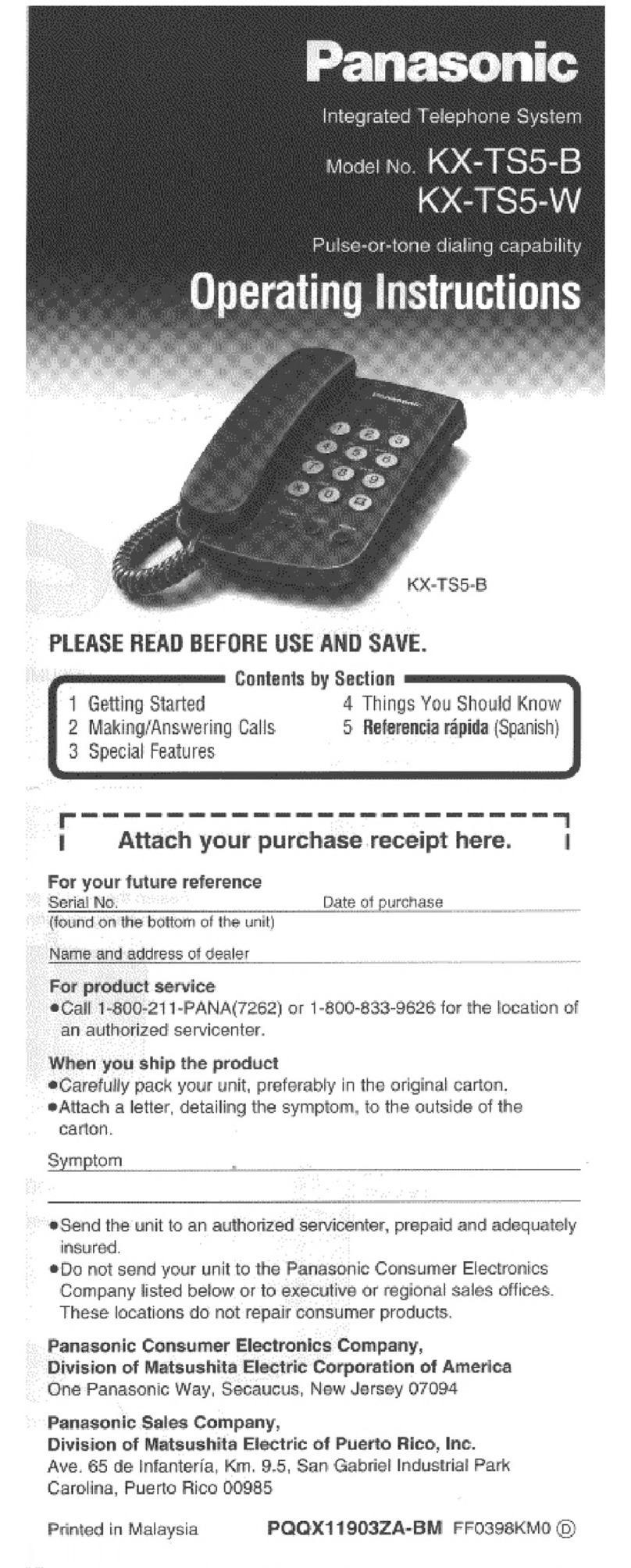
Panasonic
Panasonic KX-TS5 user guide

Panasonic
Panasonic ICX Technical manual

Sprint
Sprint 4-Line Telephone Systemwith Speakerphone andCaller... owner's manual

Samsung
Samsung OFFICESERV 500 Series User instruction
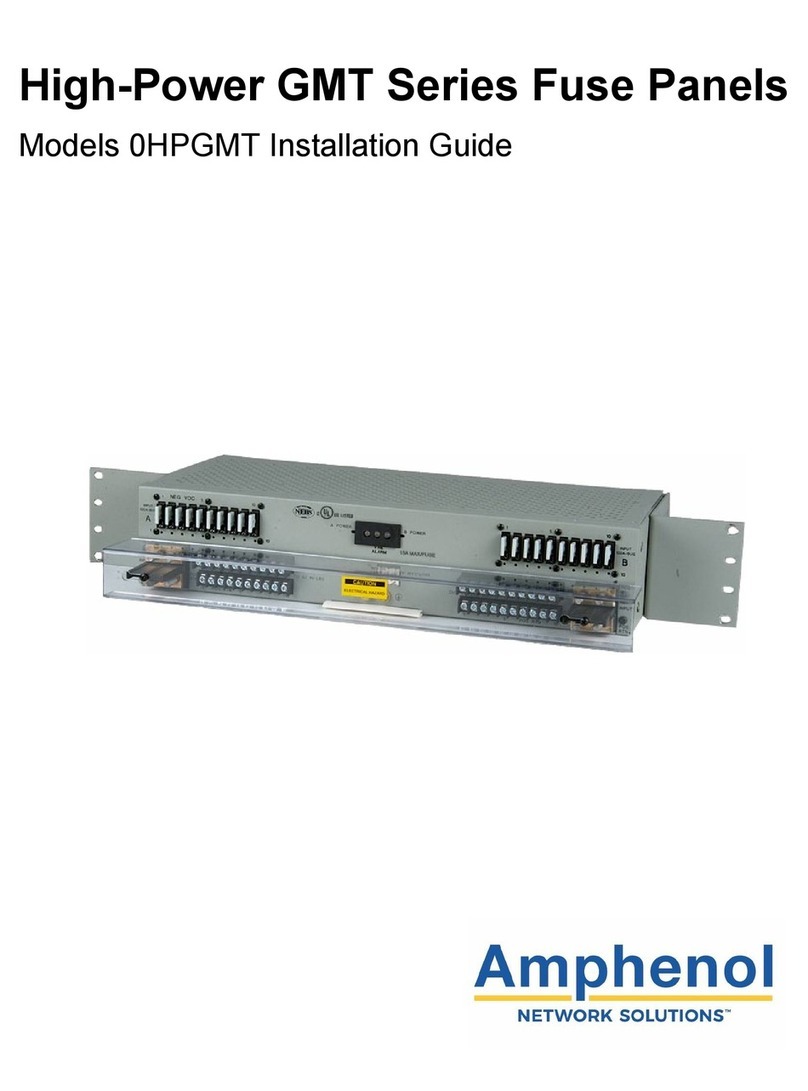
Amphenol
Amphenol GMT Series installation guide
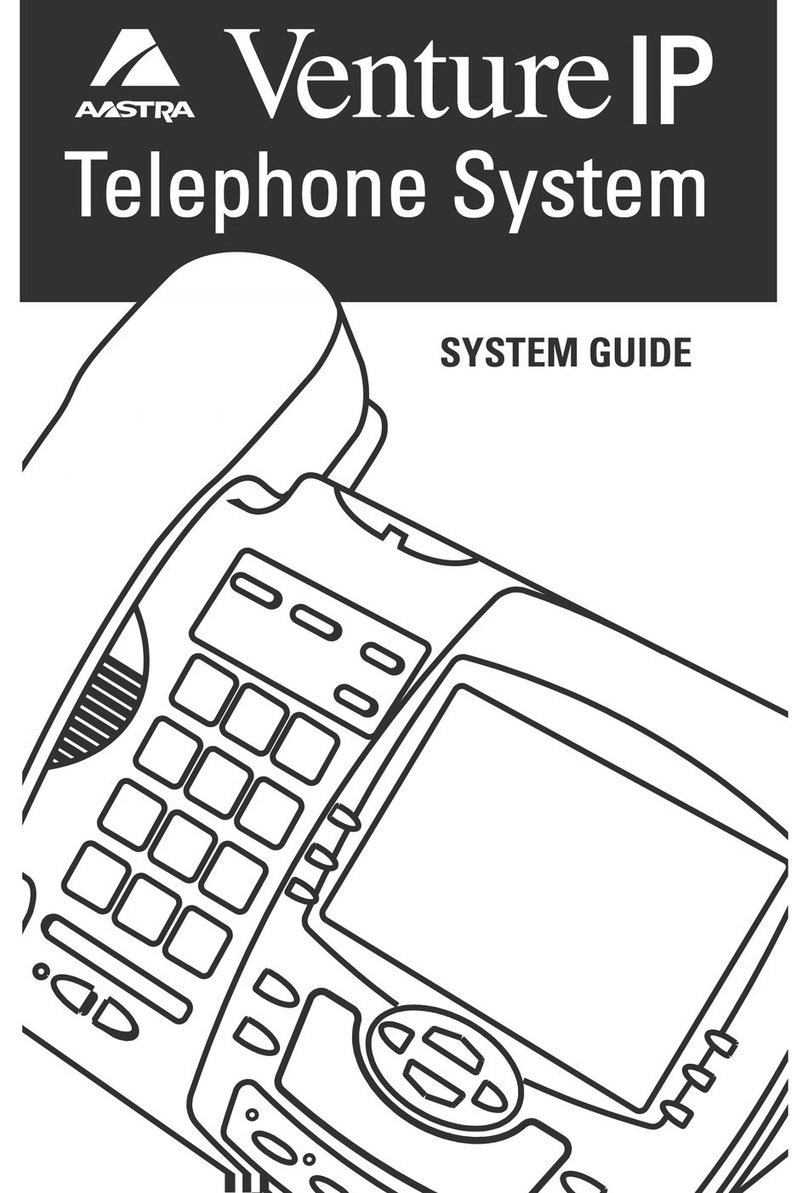
Aastra
Aastra Venture IP Telephone System System guide
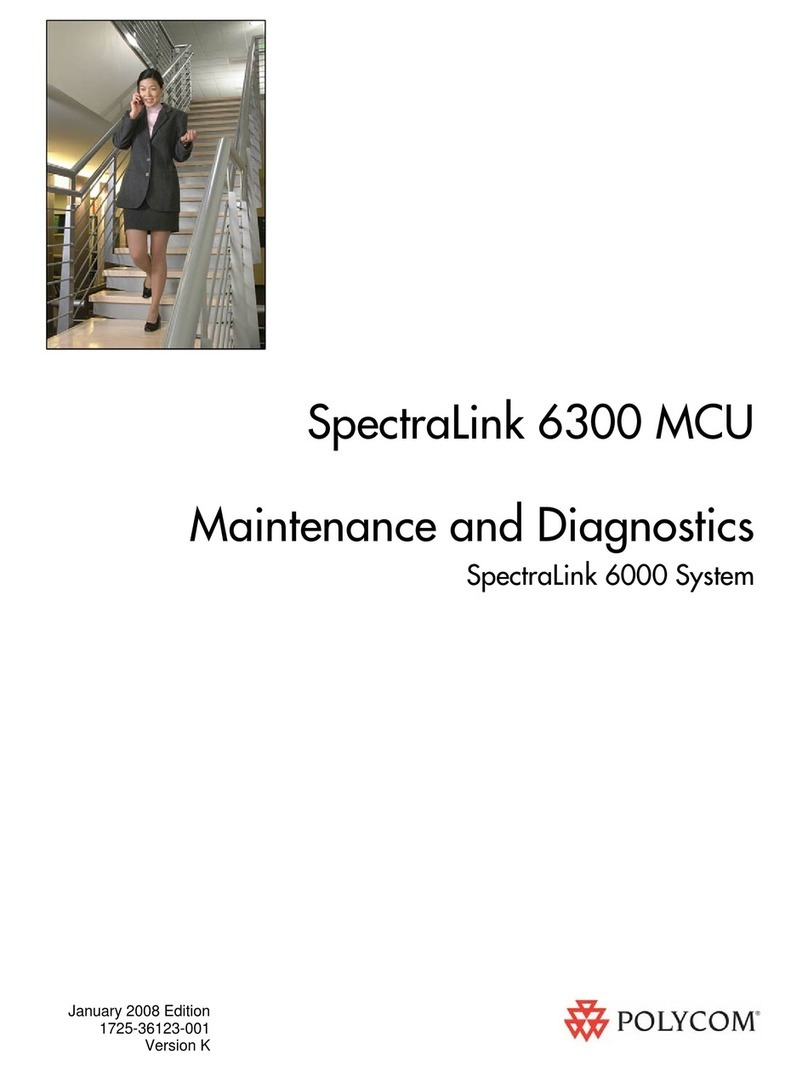
Polycom
Polycom SpectraLink 6000 System Maintenance and Diagnostics
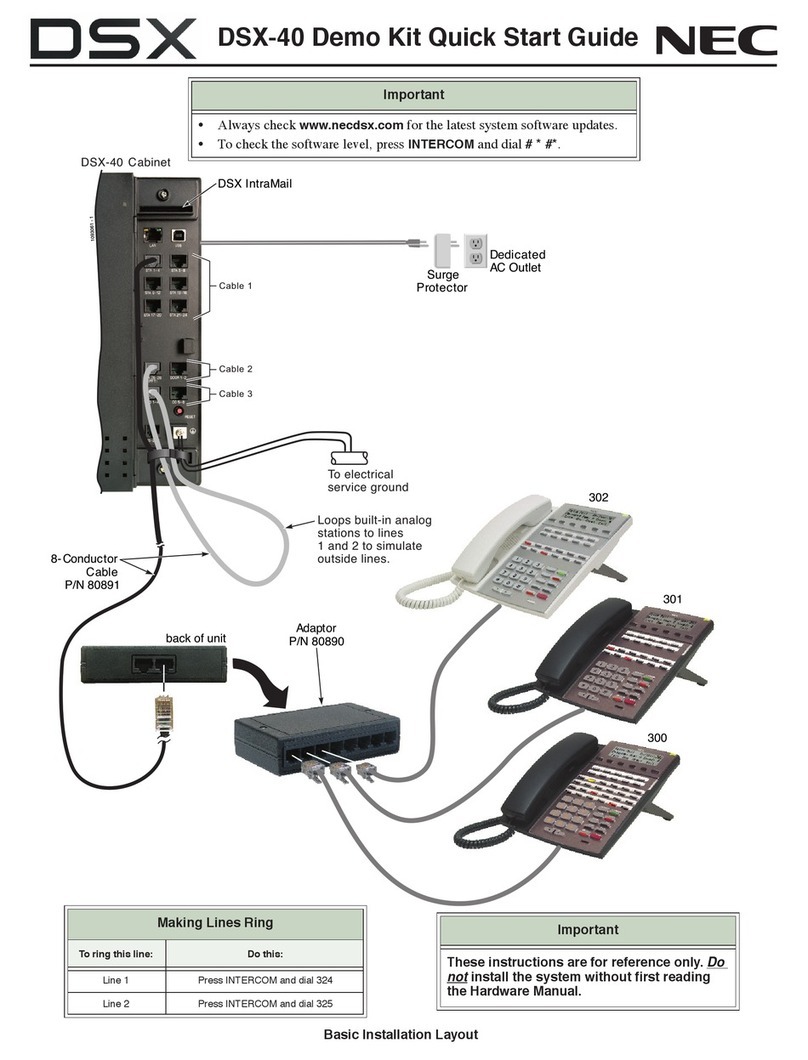
NEC
NEC DSX-40 DEMO KIT quick start guide
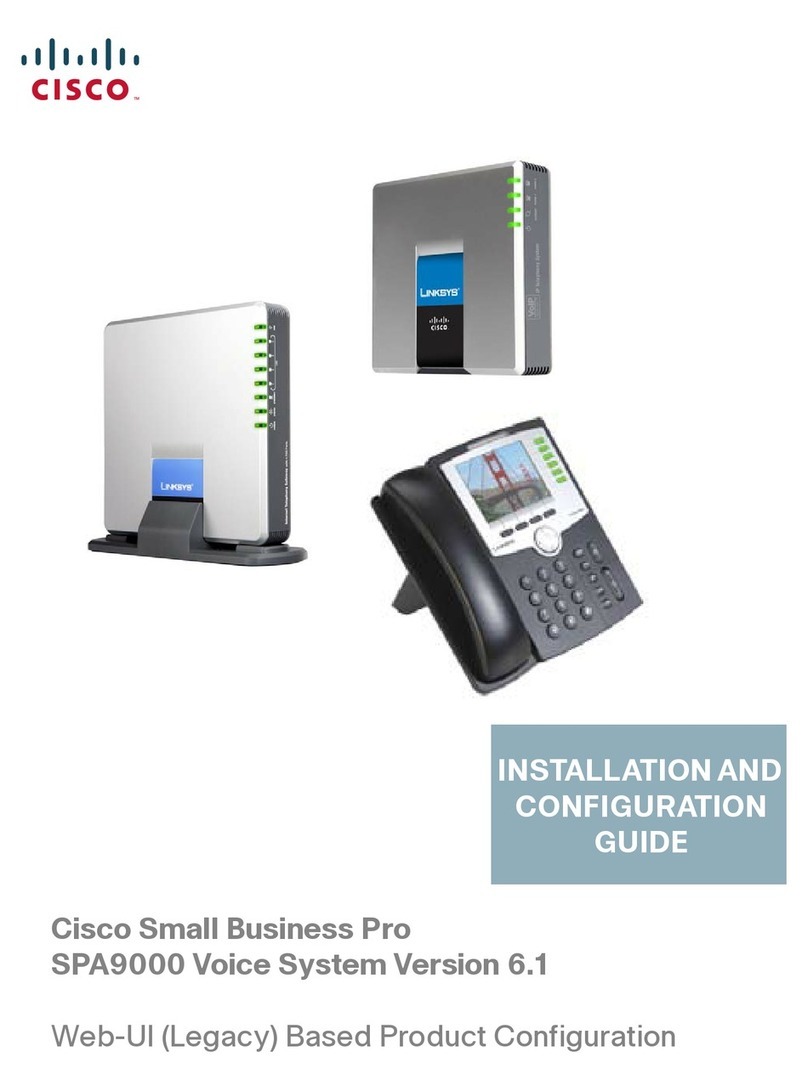
Linksys
Linksys SPA921 - Cisco - IP Phone Installation and configuration guide
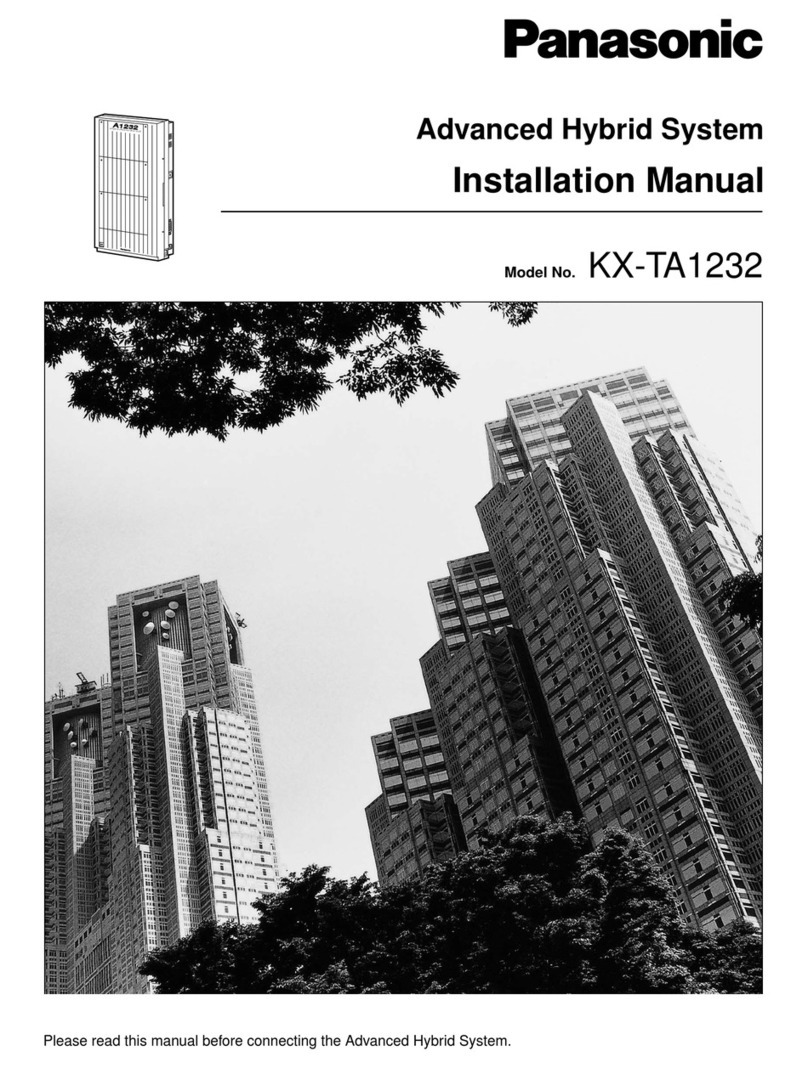
Panasonic
Panasonic KX-TA1232 installation manual
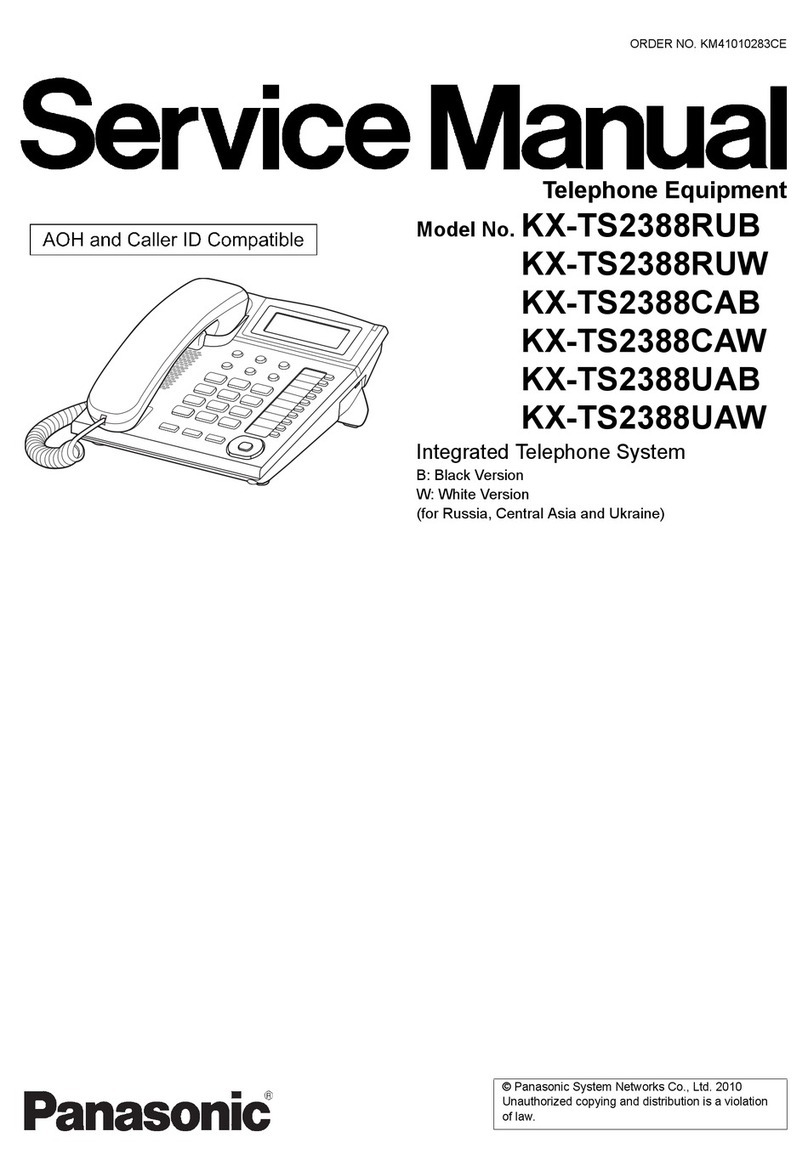
Panasonic
Panasonic KX-TS2388RUB Service manual
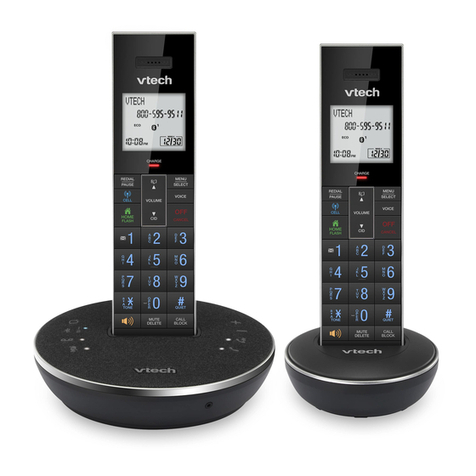
V-tech
V-tech LS6381 quick start guide

